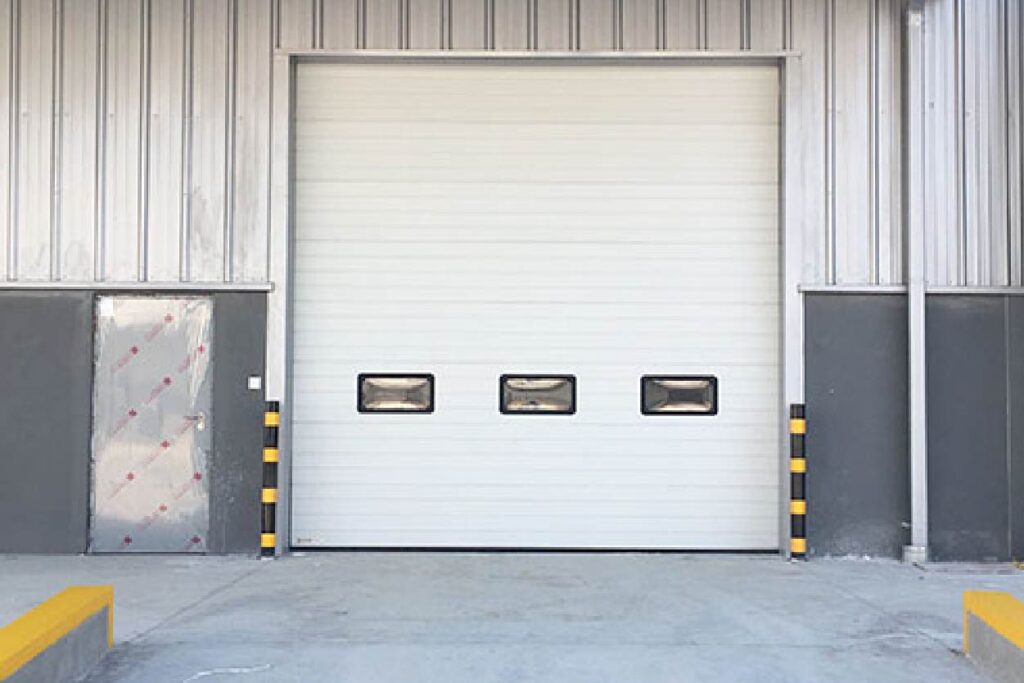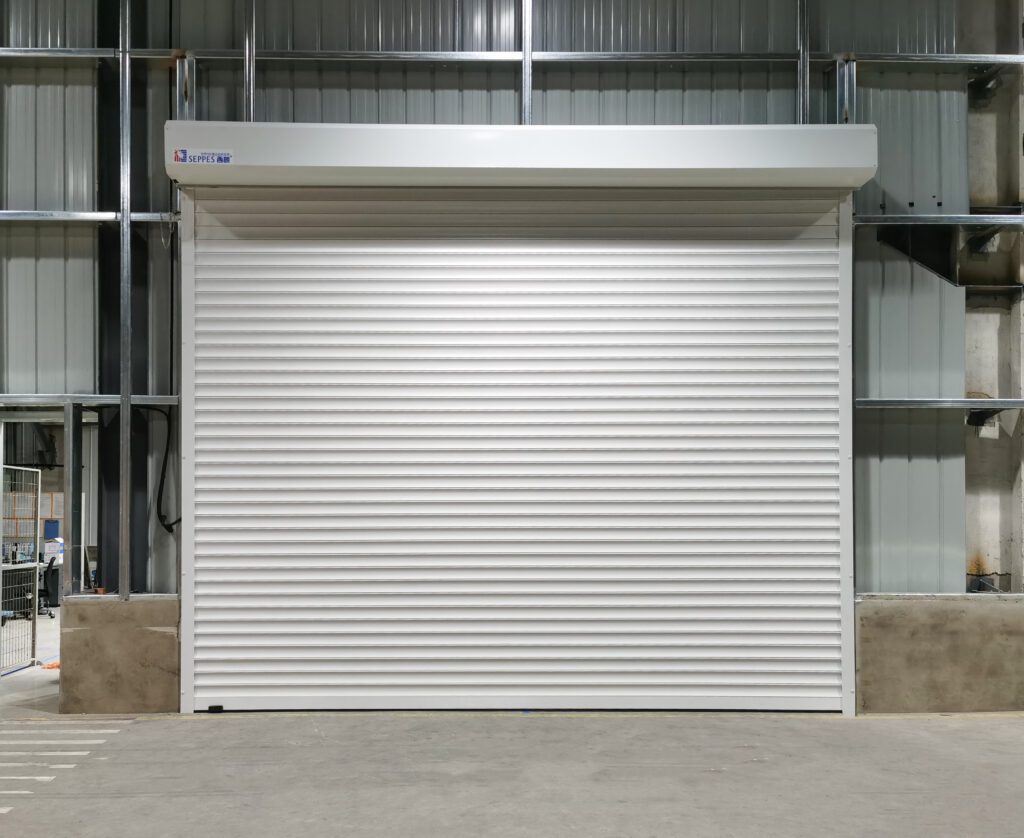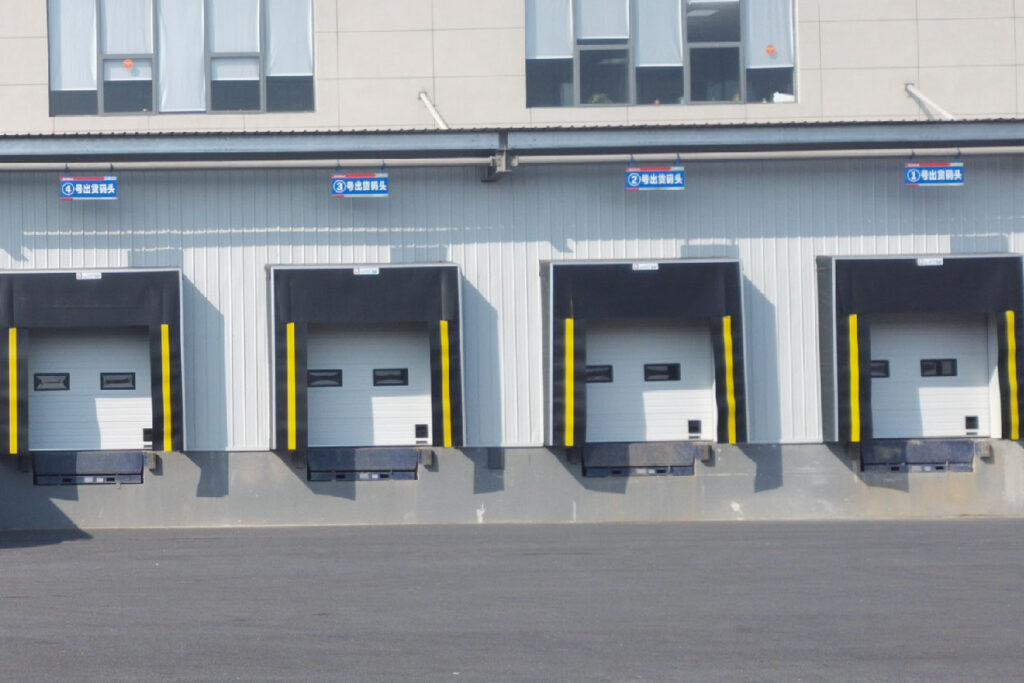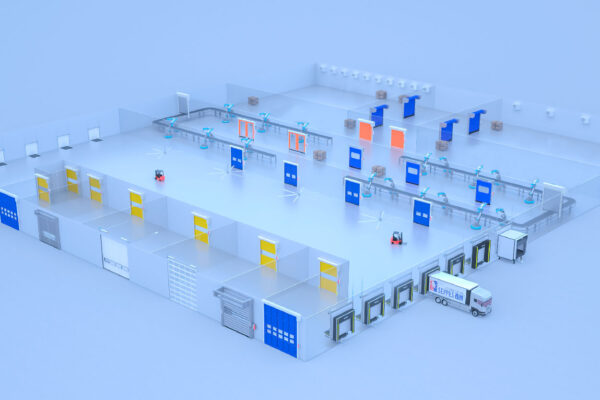Industrial Door Needs and Challenges in the Canadian Market
Canada’s industrial market has experienced rapid growth over the past few years, with demand for high-performance industrial doors (Canada Industrial Door) continuing to rise, especially in industries such as logistics, manufacturing, cold chain warehousing, food processing and agriculture. However, with the imposition of higher import tariffs by the U.S. on Canada, Canadian companies are facing new challenges when choosing industrial door suppliers:
How to choose industrial doors that are better suited to the Canadian environment?
How to find reliable industrial door suppliers and avoid quality issues?
Due to the high price of U.S. industrial doors, more and more Canadian companies are looking for alternative Industrial Door companies to U.S. suppliers and turning their sourcing attention to Chinese manufacturers. Chinese industrial door manufacturers have become one of the preferred suppliers for Canadian companies because of their ability to not only provide products that meet Canadian standards, but also reduce purchasing costs through mass production and supply chain optimization.
This guide will analyze in detail the demand for Industrial Door in the Canadian market, popular product types, supplier selection, and sourcing process to help Canadian companies find the most cost-effective Industrial Door solutions in the current high tariff environment.
Key Canadian Market Needs for Industrial Doors
When choosing an industrial door, Canadian businesses typically consider several key factors:
Energy-efficient and environmentally friendly: Insulation to reduce energy costs
With Canada’s cold winters, many factories and warehouses require energy-efficient industrial doors, such as Insulated High-Speed Doors or Sectional Industrial Doors, to minimize heat loss and reduce heating costs.
Durable and wind-resistant: adapting to extreme weather
In parts of Canada where winter snowstorms and high winds are common, industrial doors need to be wind-, frost- and cold-resistant. High-Speed Spiral Doors and Industrial Roller Shutters are preferred because of their rugged construction and ability to withstand harsh weather.
Automation and efficiency: improving operational efficiency
Modern warehouses, factories and logistics centers require industrial doors that can open and close quickly to reduce waiting times and improve operational efficiency. As a result, the Canadian market has a high demand for automated industrial doors, such as high-speed roll-up doors, and expects doors to be compatible with intelligent warehouse management systems (WMS) for remote control.
Controlling Costs: Finding More Competitively Priced Industrial Door Suppliers
With rising tariffs and increased supply chain costs, Canadian businesses need to find more cost-effective Industrial Door suppliers. Industrial Doors made in China are 30%-50% less expensive than those made in the U.S., making them an ideal choice for Canadian companies looking to control costs.
The Most Popular Types of Industrial Doors in the Canadian Market
There are a variety of industrial doors on the Canadian market, and different types of doors are used for different industry needs. Below are some of the most popular types of Industrial Doors that offer outstanding benefits in terms of energy efficiency, durability, security and more.
High-Speed Roll-Up Doors

High-Speed Roll-Up Doors are made of flexible PVC or composite materials that can be opened and closed quickly to minimize energy loss. They are commonly used in logistics centers, food processing plants, pharmaceutical warehouses and other areas that require high-frequency access.
Key Advantages:
Fast opening and closing speeds (up to 1.8m/s) for improved operational efficiency.
Reduced heat loss, suitable for cold chain and food processing industries.
Flexible door curtains to avoid forklift impact damage.
Spiral Rapid Doors

Spiral Fast Doors are made of aluminum alloy or steel door panels, with more robust structure, suitable for high security places, such as industrial plants, cold chain logistics, high wind speed areas.
Main Advantages:
Strong wind resistance (can withstand 120km/h wind speed), suitable for external installation.
High security against burglary, suitable for warehouses where valuable goods are stored.
Good thermal insulation, reducing energy loss.
Sectional Industrial Doors

Sectional Industrial Doors consist of multiple polyurethane insulated door panels and are suitable for cold storage, warehousing, manufacturing and other locations where high sealing performance is required.
Key Advantages:
Thermal insulation and heat preservation, reducing energy loss.
Sturdy structure and high wind resistance.
Suitable for large openings and can be equipped with automatic opening systems.
Aluminum Roller Shutter Doors

Aluminum Roller Shutter Doors are lightweight, corrosion-resistant industrial doors for commercial, parking, and small industrial facilities.
Key Advantages:
Lightweight and durable for wet environments.
Low cost, suitable for businesses with limited budgets.
Available with manual or motorized opening options.
Dock Shelters & Dock Levelers

Used in logistics centers and ports to improve loading and unloading efficiency and reduce temperature loss.
Key Benefits:
Reduce cold/hot air leakage and improve energy efficiency in cold chain logistics.
Improve cargo handling efficiency and reduce truck stopping time.
Provides better security and reduces the risk of cargo damage.
Comparison table of the most popular types of Industrial Doors in the Canadian market
| Door Types | Main Material | Key Features | Applicable industries |
| High-Speed Roll-Up Doors | PVC / Composite material | Fast switching, reduce heat loss | Logistics, food processing, pharmaceutical warehousing |
| High-Speed Spiral Doors | Aluminum alloy / steel plate | Wind and burglary resistant, adaptable to extreme climates | Manufacturing plants, cold chain warehousing |
| Sectional Industrial Doors | Polyurethane insulation board | Insulated and energy efficient, suitable for large openings | Cold chain, warehouse, manufacturing |
| Aluminum Roller Shutter Doors | Aluminum alloy / galvanized steel | Lightweight, durable and economical | Store, parking lot, industrial plant |
| Dock Levelers & Shelters | High-density canvas / Steel platform | Improve loading and unloading efficiency, energy saving and sealing | Port, logistics, warehousing |
How to choose a Industrial Door supplier in the Canadian market?
Choosing the right supplier is critical, and here are the key factors to consider when screening suppliers:
Supplier Selection Strategies for Tariff Impact
Avoiding the impact of high U.S. tariffs: Due to the high tariffs on Industrial Doors imported from the U.S., choosing a low-cost Industrial Door import program to China can effectively reduce sourcing costs.
Find Chinese suppliers with Canadian representation: Some Chinese suppliers already have distribution points in Canada, offering shorter lead times and localized service.
OEM/ODM suppliers: Many Chinese industrial door manufacturers offer OEM/ODM production, which can customize the size, color, and features according to the Canadian market demand, avoiding the middleman’s premium.
Criteria for assessing supplier quality
| Assessment Standards | Importance |
| Quality Certification | Ensure suppliers are ISO 9001, CE certified, UL certified and meet Canadian standards. |
| Tariff Policy | Reduce import costs by choosing suppliers with zero or low tariffs |
| Energy Efficiency | Product compliance with Canadian building energy standards (R-value insulation standards) |
| Voltage Compatibility | Ensure industrial doors support Canadian 110V/220V power standards |
| After Sales Service | Does the supplier provide local Canadian technical support, warranty |
| Delivery Cycle | Can the supplier guarantee delivery within 30-45 days? |
Chinese suppliers vs. local Canadian suppliers vs. American suppliers
| Selection Factors | China Supplier | Local Canadian suppliers | U.S. Suppliers |
| Price | ✅ 30%-50% lower | ❌ Higher | ❌ Expensive |
| Quality Certification | ✅ CE, ISO, UL | ✅ CSA, UL | ✅ UL, NFPA |
| Customization | ✅ Support OEM/ODM | ❌ Limited selection | ❌ Limited selection |
| Lead Time | ⚠ 25-45 days (sea transportation) | ✅ 7-15 days | ✅ 7-15 days |
| After Sales Support | ⚠ Partially support local service | ✅ Local after-sales support | ✅ Local after-sales support |
| Tariff Impact | ✅ Low or zero tariff | ✅ No Duty | ❌ High Duty |
Advantages and Sourcing Process of Importing Industrial Door from China
Why choose to import Industrial Door from China?
Prices are 30%-50% lower and more competitive than local Canadian or U.S. suppliers.
Quality standards are in line with the Canadian market and suppliers have CE, ISO, UL certifications.
Customized production to meet the needs of different companies (size, material, color, intelligent control system)
Mass production, stable delivery, suitable for long-term cooperation.
Import process
Determine the needs: choose the right type of industrial door Canada, confirm the size, material and function.
Selection of suppliers: Finding suitable suppliers through Alibaba, B2B platforms and trade fairs.
Quality inspection: ask suppliers to provide samples to check the material, structure and performance.
Order and contract: sign the contract, specify the delivery date, payment method and warranty terms.
Transportation and customs clearance:
Sea transportation (25-30 days) Suitable for large-volume purchasing and lower cost.
Air transportation (5-7 days) Suitable for urgent orders, high cost.
Installation and commissioning: use local installation team, or remote guidance from suppliers
Installation and Maintenance Guide for Industrial Door Canada
Installation Points
Confirm the size of the door opening, make sure the door body matches with the warehouse and factory.
Voltage match, Canada standard voltage 110V/220V, confirm the compatibility of the motor system before installation.
Fix the track and the door body, ensure the smooth slide, no jamming
Test the auto-sensing system to avoid malfunction
Daily Maintenance Tips
Regularly check track and motor lubrication to prevent wear and tear of parts
Clean door curtains and seals to maintain sealing and reduce cold air loss
Check anti-corrosion coating to prevent rust caused by humid environment
Conclusion: How to Optimize Sourcing Canada Industrial Door in a High Tariff Environment?
Choose Chinese suppliers to avoid high tariffs and save 30%-50% on sourcing costs.
Sourcing energy-efficient door bodies reduces energy consumption and lowers long-term operating costs
Utilize the advantages of bulk purchasing to reduce the cost of a single door and improve the stability of the supply chain.
Optimize logistics costs through ocean freight or local agent distribution model
FAQ (Frequently Asked Questions)
Why should Canadian companies source Industrial Door from China?
30%-50% cheaper and meets Canadian standards (CE, ISO, UL)
How can I be sure of the quality of the Industrial Door for Canada source from China?
Choose a supplier with experience in exporting, ask for certifications, and request samples before purchasing
What are the shipping options for importing Industrial Door?
Ocean (25-30 days) for large volume orders; Air (5-7 days) for urgent orders
How do I choose the right Industrial Door for the Canadian market?
High-speed roll-up doors for high-frequency opening and closing requirements; sectional industrial doors for thermal insulation requirements; rigid speed doors for durability and wind resistance requirements.
Reference Material
Brazilian Industrial Doors: Market Demand, Types and Selection Guide

